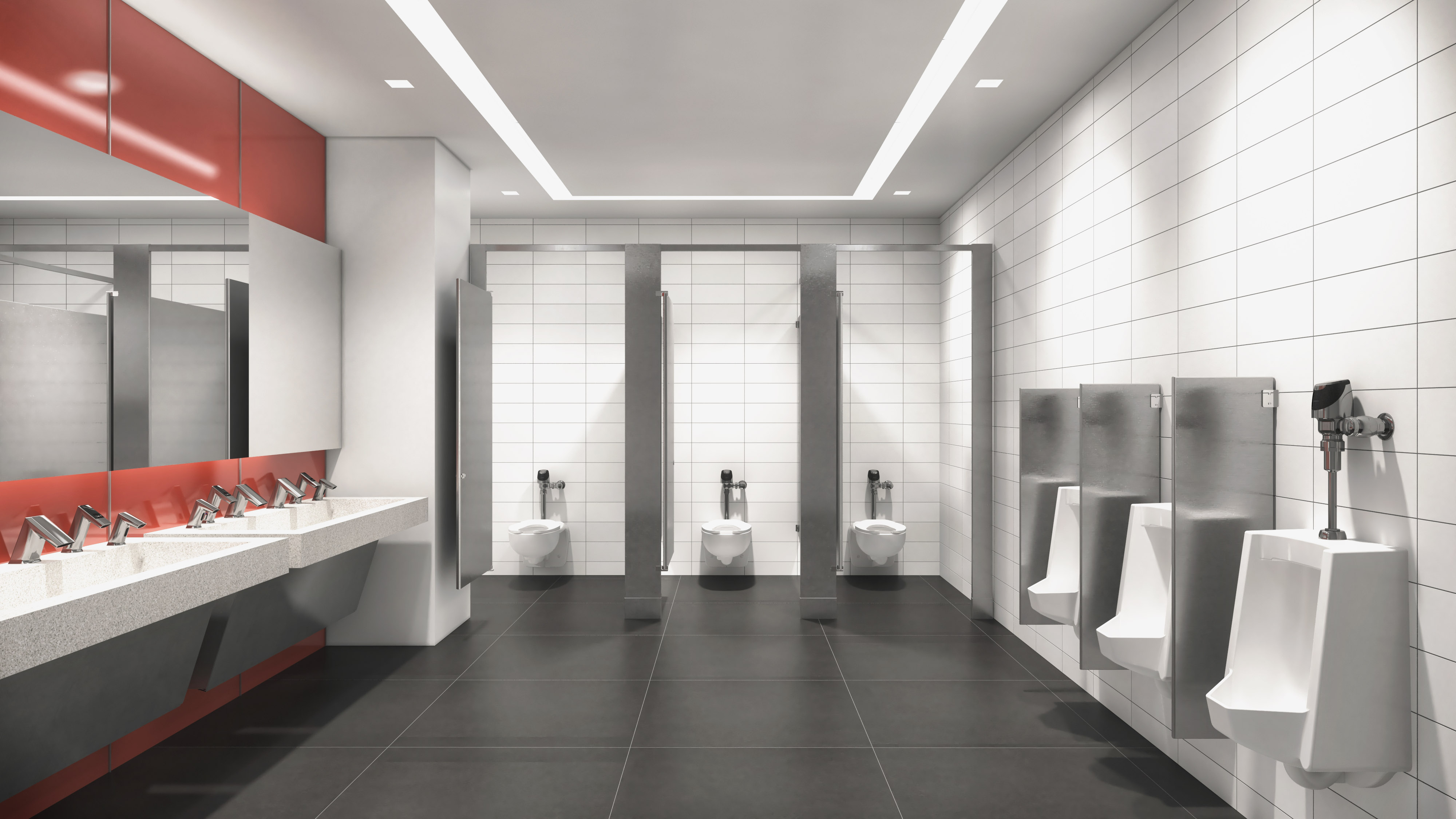Commercial facility managers have never seen a period like the one we’re going through. Everyone is looking forward to getting life back to normal so thousands of office buildings, schools, entertainment venues, and retail outlets can finally reopen.
There’s more to reopening, however, than simply opening the doors and inviting everyone back—especially where restrooms are concerned.
Before people can return to your facilities, your faucets, flushometers, water closets, urinals and showerheads must be properly flushed to reduce the serious water safety risks associated with a long period of inactivity. We’ve compiled a comprehensive Guide to Properly Clear (Flush) Commercial Restrooms to help you through this critical process.
Here’s a preview of what you’ll need to know for making your reopened restrooms safer and more hygienic.
How to Safely Flush or Purge Your Restroom Fixtures
Water that sits in plumbing lines for extended periods of time becomes stagnant. It can have a bad taste, unpleasant odor, debris, or elevated levels of lead and copper. More troubling, it may have lost all or most of its residual disinfectant, which can lead to elevated levels of bacteria and contain other pathogens such as Legionella or Pseudomonas aeruginosa.
That’s why all flushometers, toilets, urinals, faucets, and showerheads in commercial restrooms which have been idle for extended periods must be purged.
- Flushometers for Water Closets and Urinals: Start by flushing the water closets and urinals located farthest from the branch lines at least three times. The rest need only be flushed twice.
- Pressure-Assisted and Tank Type Toilets: Flush each pressure-assisted toilet at least three times, allowing re-pressurization between each flush. For tank toilets, flush the one farthest from the branch lines at least three times, and the rest twice.
- Faucets: Remove aerators and sanitize them—or, better yet, replace them. Then, place your hand under each faucet for at least 90 seconds to activate water flow.
- Showerheads: Run both hot and cold at full opening for at least three minutes.
Reducing the Number of Surfaces a User Touches
In addition to thoroughly purging flushometers, toilets, faucets, and showerheads, you should also consider the safety of the people who’ll return to your facility when it reopens. Users will be less likely to come into contact with microbiological contaminants with touchless, sensor-activated restroom faucets and fixtures.
As Sloan Co-President and CEO Graham Allen recently said, “Any product that eliminates or reduces the number of surfaces the user touches is now of the utmost importance, and COVID-19’s rapid uptick has accelerated the need for such touch-free products.”
Hands-free commercial restroom fixtures are so much more hygienic than manually-activated products. That’s why Sloan’s hundreds of different faucet models are all touchless.
The Ideal Time to Retrofit to Touchless Fixtures
While you are preparing to reopen your facility, now is the ideal time to retrofit with touch-free flushometers and upgrade to sensor faucets, soap dispensers, and hand dryers.
When you upgrade from manual to sensor products, you will welcome workers, students, and visitors back to a more hygienic environment.
We all want to get back to our offices, classrooms, restaurants, and stores. Flushing restroom fixtures is essential, and a modest investment in sensor-activated faucets and fixtures can help everyone feel safer when our facilities finally reopen.
Sloan helps architects, designers, engineers, and building owners build commercial restrooms to the highest standards of hygiene. Like to know more? Talk to Sloan!
Stay Up to Date
Sign up for the Sloan blog to receive information on the latest trends in commercial building, technology advancements and product updates. It's the leading source of industry news for architects, designers, engineers and contractors.
